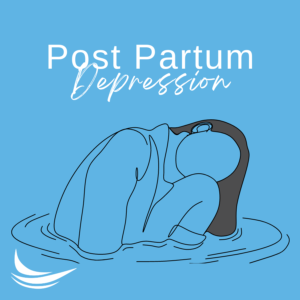 Did you know that there are three continuous but distinct phases in the postpartum period? Both physical and mental health changes are occurring within each stage.
Did you know that there are three continuous but distinct phases in the postpartum period? Both physical and mental health changes are occurring within each stage.
Early intervention can help detect and treat problems that occur during the postpartum recovery timeline, including complications during pregnancy, immediately after childbirth, and during recovery as the body heals and adjusts to hormonal shifts. Both medical and mental health professionals are important parts of your care team during these various stages. They can help support you with any struggles with mood impacted by hormonal changes such as postpartum depression.
1st Stage: This initial period is within the first 6-12 hours postpartum. During this time, monitoring for any immediate distress to the birthing parent such as postpartum hemorrhage, uterine inversion, and eclampsia is important. Immediately after childbirth, physical pain, discomfort, bleeding, physical exhaustion, and feeling emotionally overwhelmed are common.
Feeling sadness after the birth of a baby known as the “baby blues” is also common and short-lived, typically most present 4-5 days after giving birth and should decrease and last no more than two weeks. According to the American Pregnancy Association, the “baby blues” impacts approximately 70-80% of new mothers. This is viewed as a mild form of postpartum depression.
Postpartum depression should be monitored and discussed, especially more severe signs. Please reach out and seek support for depressive symptoms that persist longer than two weeks.
2nd Stage: This period occurs within 2-6 weeks postpartum. The body and uterus are recovering. While physical exhaustion and feeling overwhelmed is still common, many resume physical exercise and sexual activity by the end of this period.
Approximately 15% of mothers experience, peripartum depression, which is formerly known as postpartum depression (PPD). Peripartum depression is characterized by more extreme feelings of sadness, impacting thoughts and mood along with changes in sleep, appetite, and energy levels. Thoughts of suicide, thoughts of harming your child, worsening depression, and difficulties that impact day-to-day functioning should be taken seriously. Local crisis resources, emergency supports, and the suicide prevention lifeline are available resources.
Having a visit with your healthcare provider during the first 3 weeks and then a visit within the first 12 weeks after delivery for comprehensive postpartum evaluation is recommended after labor and delivery.
3rd Stage: This period last up to the first 6 months. Physical changes in the body’s milk production and menstrual cycle are common. Mental health tends to be more stable and positive. If you are still struggling with depression or other mental health concerns, it is important to discuss these concerns with a doctor or mental health professional. The American College of Obstetricians and Gynecologists recommends that postpartum care be ongoing. Collaborating care with more than one provider with different but related specialties such as your ob-gyn, primary care doctor, nurse practitioner, midwife, dietician, psychiatrist, mental health case manager, or therapist is one way to ensure that you have a team of supports available to help.
Additional Resources:
https://www.postpartum.net/learn-more/useful-links/
https://ppsupportmn.org/help-for-parents/
https://namimn.org/support/information-and-resources/perinatal-resources/
Written By: Charlotte Johnson, MA, LPCC
We’re Here to help
Our wellness experts will be happy to take care of you. You can CLICK HERE to schedule an appointment now or call (612)223-8898.
Meet Clinicians
We’re united by our commitment to providing effective, relevant, and innovative mental health support at all stages of your journey. Click Here to find a therapist or find out more about who we are, where we come from, and how we live out CARE’s mission every day.
The professionals at CARE are actively collecting and creating resources to help with what you need and address frequently asked questions. We’re Here for You.



